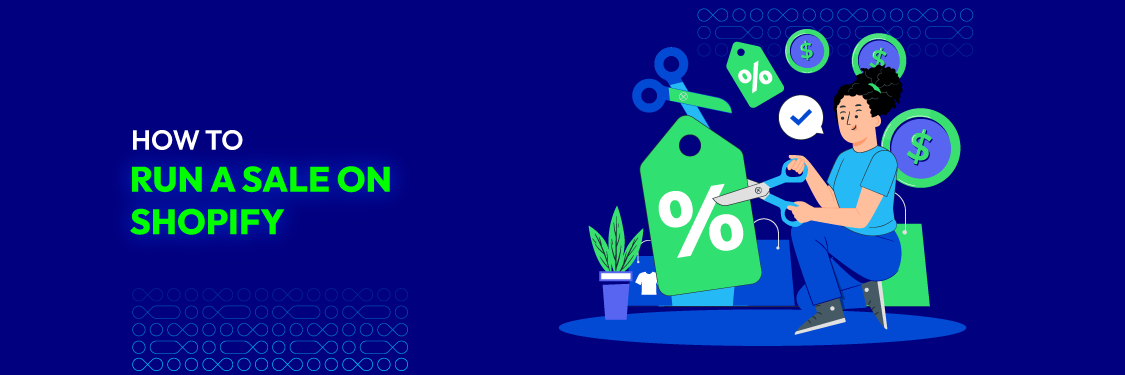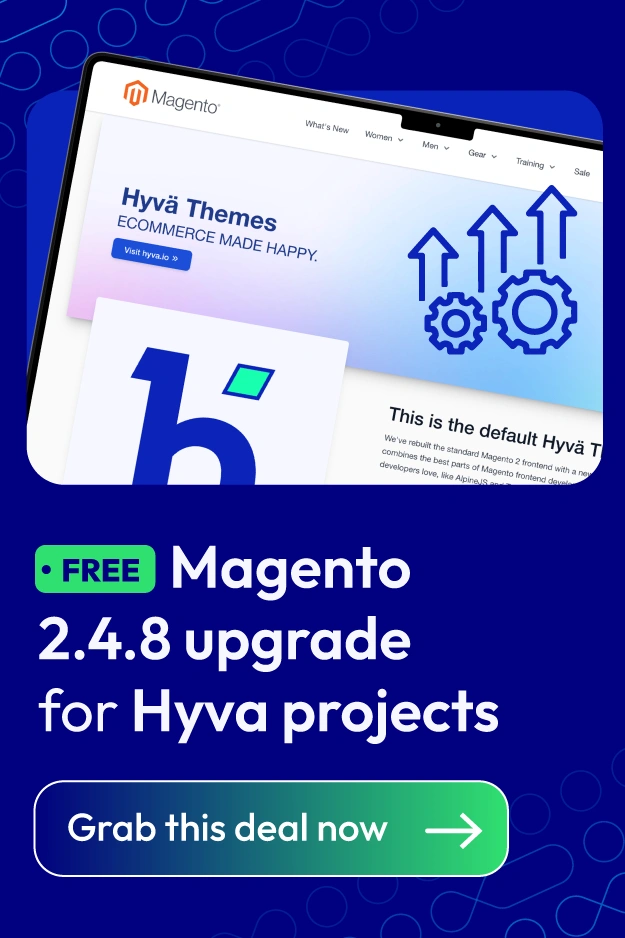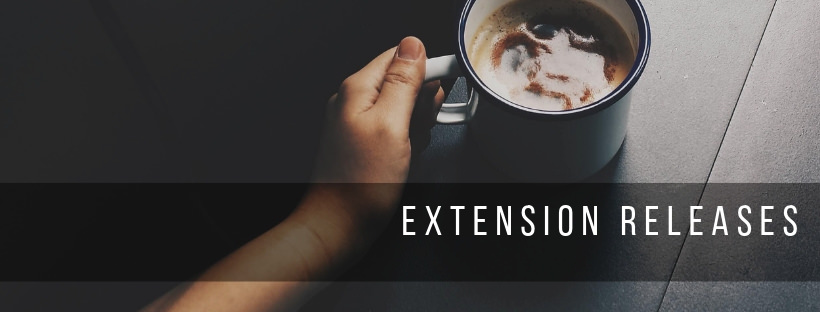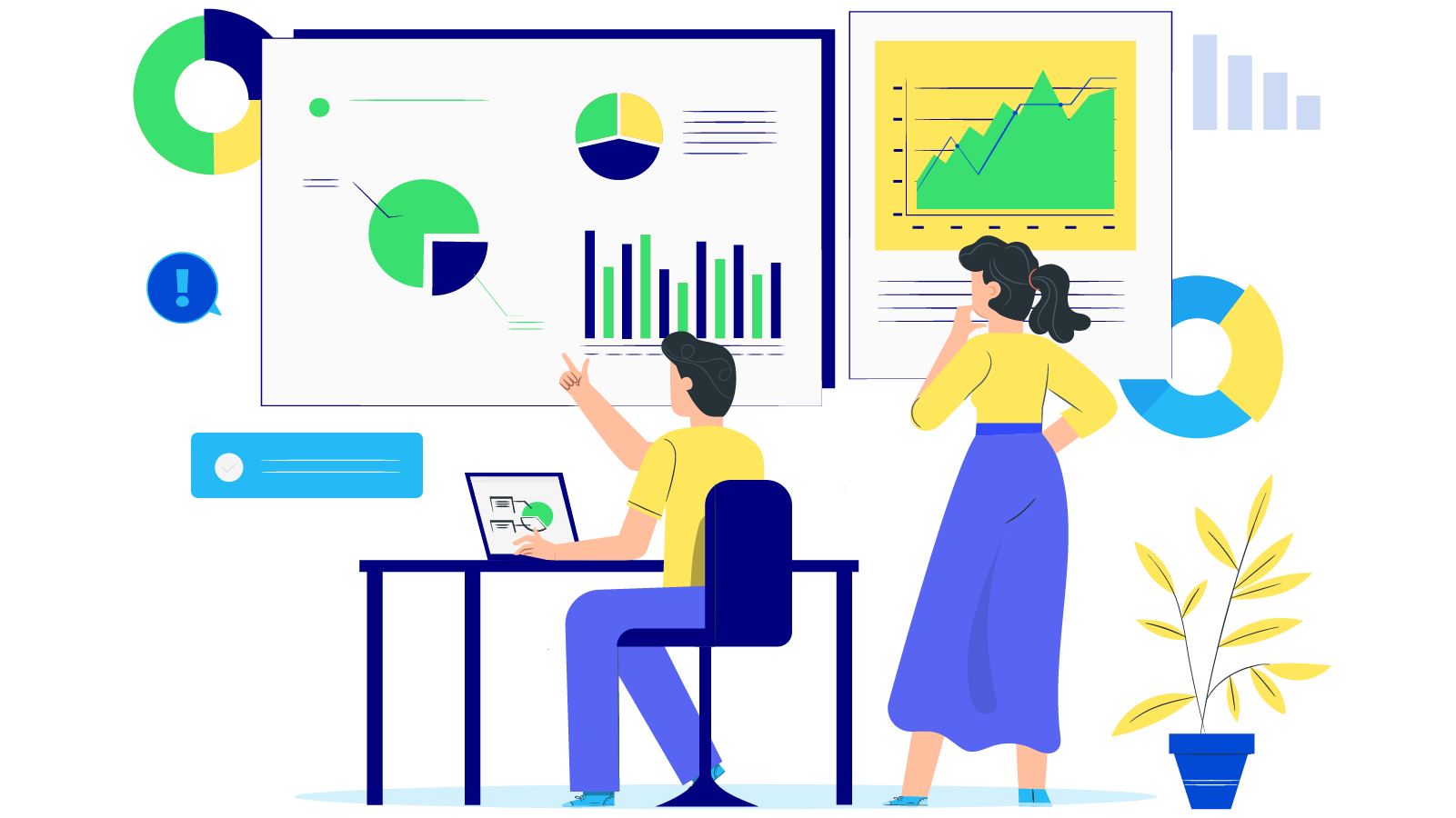How To Run A Sale On Shopify: Benefits And Tips
Summer Nguyen | 01-25-2024

Running a sale on Shopify can be a game-changer for your online business. Shopify, one of the most popular e-commerce platforms, powers over 4 million stores worldwide and has facilitated sales totaling over $700 billion since its inception since its inception. With the platform’s robust features and user-friendly interface, businesses of all sizes can easily set up and manage sales campaigns that drive traffic, increase conversions, and boost revenue.
But to truly harness the power of sales on Shopify, it’s crucial to have a solid plan in place. From choosing the right products and discounts to effectively promoting your sale, every step counts. In this guide, we’ll walk you through everything you need to know about how to run a sale on Shopify, ensuring that you maximize your store’s potential.
What should you run a sale on Shopify?

Running a sale on Shopify offers several benefits for your e-commerce business. Here are the top reasons to consider:
- Boost Sales and Revenue: Discounts and promotions attract customers, encouraging them to make purchases they might have otherwise postponed. The surge in sales during the promotional period can lead to higher overall revenue.
- Clear Excess Inventory: Sales are an effective way to clear out old or unsold stock, freeing up space for new and more profitable products without having to take a loss.
- Attract New Customers: Sales can attract new customers who are looking for deals. When new customers have a positive experience during the sale, they may become loyal customers in the long run.
- Retain Loyal Customers: Existing customers appreciate discounts and promotions. Offering sales to your current customer base can help retain and reinforce their loyalty.
- Create a Sense of Urgency: Limited-time offers or flash sales encourage customers to act quickly, preventing them from delaying their purchase decisions.
- Gain Valuable Customer Insights: Running sales provides you with rich data on customer preferences and purchasing behavior. This information can be useful for developing future marketing and product strategies.
- Maximize Revenue with Volume: While sales may involve lower profit margins per item, the increased sales volume can result in higher overall revenue and, potentially, higher profits.
- Enhance Brand Visibility: When customers tell their networks about a sale, you can expand the visibility and reach of your brand. Increased brand recognition and possibly higher sales can result from this.
- Compete In The Market: Providing sales can provide you with a competitive advantage in the cutthroat world of online retail by luring customers to your store rather than others.
- Seasonal Promotions: Sales can be tailored to coincide with various seasons, holidays, or events, allowing you to align your marketing strategies with the needs and expectations of your target audience.
- Cross-selling & Upselling: During a sale, you can strategically promote related or complementary products, encouraging customers to make additional purchases.
- Improved Cash Flow: Sales can help improve cash flow, particularly if you offer time-limited discounts that motivate customers to make immediate purchases.
- Test New Products: Sales can also be used to introduce and gauge interest in new products, allowing you to gather feedback and adjust pricing or inventory based on customer response.
- More Feedback & Reviews: Increased sales can result in more customer feedback and product reviews, which can be helpful for enhancing your offerings and gaining the confidence of prospective customers.
A step-by-step guide to running a sale on Shopify
Step 1: Plan Your Sale Strategy
-
Define Goals: Decide what you want to achieve with the sale (e.g., clearing inventory, acquiring new customers, or increasing revenue).
-
Set Discounts: Determine the discount percentage or offer (e.g., percentage off, BOGO, free shipping).
-
Choose Sale Products: Identify which products will be part of the sale based on your goals.
Step 2: Set Up Your Discount in Shopify
- Navigate to Discounts in Shopify Admin: Go to the Shopify admin dashboard and click on “Discounts.”

- Create Discount Code: Click on “Create discount” and select the type of discount, such as percentage or dollar amount off.


- Define Discount Parameters: Set conditions such as minimum purchase amount, customer eligibility, and expiration date, etc.

Step 3: Customize Your Sale Page
- Update Product Listings: Mark discounted products with sale badges or updated prices so customers can easily spot them.
- Create a Sale Collection: Group all sale items into a single collection page to make it easier for shoppers to browse.

Step 4: Promote Your Sale
- Email Marketing: Announce your sale to your email list with an eye-catching subject line and clear call-to-action.
- Social Media Campaigns: Promote the sale on your social media channels using countdowns, flash sale alerts, or influencer partnerships.
- Paid Advertising: Use Google Ads, Facebook Ads, or Instagram Ads to target a wider audience and drive traffic to your sale.

Step 5: Set Up Upselling and Cross-Selling
- Offer Related Products: Use Shopify apps to recommend complementary or higher-value items during checkout to increase average order value.
- Bundle Offers: Create product bundles that give additional discounts when purchased together.
Step 6: Test Your Sale Settings
- Preview Discounts: Before launching, preview the sale on your store to ensure the discounts apply correctly and are visible to customers.
- Check Payment and Shipping: Make sure the discounts reflect accurately during checkout and test various payment and shipping methods.
Step 7: Monitor the Sale Performance
- Track Metrics: Use Shopify’s analytics tools to track sales performance, customer behavior, and top-selling products during the sale.
- Adjust as Needed: If the sale isn’t performing as expected, consider tweaking the discount amount, promoting it further, or extending the sale duration.
Step 8: Engage Post-Sale
- Follow-Up Emails: Send thank-you emails to customers who participated in the sale, and offer them a future discount to encourage repeat purchases.
- Collect Feedback and Reviews: Ask for product reviews and gather feedback on their shopping experience to improve future sales events.
When should you run a sale on Shopify?

Choosing the right time for your sale can make all the difference. Here are some common scenarios to consider:
- Seasonal Sales: Consider running sales around major shopping holidays like Black Friday, Cyber Monday, Valentine’s Day, Christmas, or back-to-school season, when customer spending is at its peak.
- Inventory Clearance: When you have excess inventory or products that need to be moved quickly to make room for new items, a clearance sale can help you sell those products efficiently.
- Product Launch: Using sales to generate buzz and excitement when launching a new product or collection can encourage customers to explore the new items and drive early sales.
- Customer Appreciation: Show your existing customers that you value their loyalty by running occasional customer appreciation sales. This can enhance customer retention and foster goodwill.
- Anniversaries & Milestones: Celebrate your store’s anniversaries or milestones with special sales or promotions. For instance, on your store’s first anniversary, you could offer a “One-Year Celebration Sale.”
- Slow Sales Periods: If your business experiences slower sales during specific times of the year, consider running a sale to stimulate demand during these periods.
- Recover abandoned carts: Targeted discounts or sales can be used to draw in customers who have left their shopping carts behind. Personalized offers can be sent to them to help make up for lost sales.
- Competitive Reaction: Keep an eye on what your rivals are doing, and think about holding a sale in response to their marketing. Take care not to get into a pricing war that might hurt your business’s bottom line.
- Subscription Promotions: Provide a one-time discount to entice customers to register for newsletters or create accounts. You can use this to grow your email list for upcoming marketing campaigns.
- Limited-Time Offers: Use flash sales or limited-time offers to instill a sense of urgency. These brief sales periods may encourage speedy conversions.
- Loyalty Programs: Integrate sales into your loyalty program, offering exclusive discounts or early access to loyal customers.
- Collaborations & Partnerships: If you collaborate with other brands or influencers, running joint promotions can introduce your products to new audiences.
- Product Refresh: When you update or refresh a product line, consider running a sale on the older versions to clear out inventory and make way for the new releases.
- Customer Feedback: If you’ve received valuable feedback from customers and made improvements to your products or services, consider a relaunch sale to highlight these enhancements.
- Random Acts Of Kindness: Surprise your customers with occasional “just because” sales or discounts. These unexpected promotions can create goodwill and reinforce customer loyalty.
When planning a sale, it’s essential to set clear goals, determine the duration and extent of the discounts, and create a marketing strategy to promote the sale effectively. Remember that frequent and poorly executed sales can devalue your brand, so balance your sales strategy to maintain profitability and brand integrity.
How to get your Shopify store ready before running a sale?

- Include banners or a countdown clock: Banners or a countdown clock should be prominently displayed on your website’s homepage and possibly other relevant pages. The banners should include essential information, such as sale start and end dates, and be designed to grab attention without overwhelming the site’s design.
- Put the offer in a popup window: A pop-up window is a non-intrusive way to capture visitors’ attention and inform them about your sale. Ensure the pop-up is easy to close if a visitor is not interested.
- Publish sales pages or edit existing ones: Make sure to create and publish the landing page well in advance if you have one specifically for the sale. These pages ought to include all the details regarding the sale, special offers, discounted items, and any terms that may apply. Edit current product pages to add the sale prices and offer details if you’re not making separate sales pages.
- Review and update the pages: Review all the pages on your website to verify the accuracy of product details, prices, and images. Ensure that the product pages are consistent in terms of design and information.
- Test every type of communication and add some live chats: Test your email marketing system to ensure that automated email notifications and newsletters will be sent as planned. Check that they contain the correct information, including the sale details.
- Test your order forms and payment options: Carefully test your order forms to ensure a seamless checkout process. Ensure that customers can easily add items to their shopping cart, proceed to checkout, and complete the purchase without any technical issues.
You can make sure that your Shopify store is ready for your impending sale, giving your customers a flawless shopping experience and optimizing the impact of your promotion, by carefully following these steps.
How to notify your customers before running a sale on Shopify
Notifying your customers before running a sale on Shopify is crucial to maximize the impact of your promotion and generate excitement. Here’s how you can effectively notify your customers using the methods you mentioned:
Distribute email bulletins
- Segment Your Email List: Segment your email list according to consumer preferences, past purchases, or demographics. This enables you to communicate with particular groups in a targeted manner.
- Create Eye-Catching Emails: Design visually appealing and informative email newsletters highlighting the details of your upcoming sale, including dates, discount percentages, and featured products.
- Include A Countdown Timer: To instill a sense of urgency and motivate recipients to act right away, think about including a countdown timer.
- Personalize Messages: Use the recipient’s name and tailor the content to their preferences whenever possible.
- Send Teaser Emails: Build anticipation by sending teaser emails before the sale starts, providing a sneak peek of the products and discounts to come.
Utilize social media
- Schedule Posts: Schedule social media posts on platforms like Facebook, Instagram, Twitter, and Pinterest to announce the sale.
- Create Visual Content: Use eye-catching graphics, images, and videos to make your posts stand out. You can also use carousel posts or stories to showcase multiple products.
- Leverage Hashtags: Make use of pertinent hashtags to expand your audience and make your posts more visible.
- Engage with Your Audience: Respond promptly to comments, questions, and messages to build excitement and provide information to potential customers.
Use advertising
- Paid Ads: Invest in paid advertising on platforms like Facebook Ads, Google Ads, or Instagram Ads to reach a larger audience.
- Remarketing: Run remarketing campaigns to reach people who have already interacted with your business or visited your website.
- A/B Testing: Test different ad creatives, copy, and targeting options to optimize the performance of your ads.
Use back-in-stock notifications
If you have products that were previously out of stock and are now available for sale, notify customers who expressed interest in these items. Implement back-in-stock notifications on your Shopify store to capture customer email addresses and send automated notifications when the products become available.
Consistency and timing are key when notifying your customers about an upcoming sale. Plan your messaging strategy and ensure that all your communication channels are aligned to create a unified, exciting message about your sale.
Best 5 apps for a sale campaign on Shopify
Bold Discounts

- Purpose: Automates the process of running sales, including flash sales, daily deals, and bulk discounts.
- Key Features:
- Automatic discount scheduling: Set start and end times for sales.
- Sale badges: Highlight discounted products with eye-catching badges.
- Flash sales: Quickly launch limited-time promotions.
- Bulk discounts: Easily apply discounts across entire categories or collections.
- Best For: Merchants who want to automate their sales process with minimal effort and are looking to run regular or seasonal sales without manually adjusting prices.
- Reviews: 4.5/5 stars from over 1200 reviews.
Klaviyo

- Purpose: Boost sales by capturing emails, sending cart abandonment messages, and running email campaigns for promotions.
- Key Features:
- Pop-up forms to capture leads and grow email lists.
- Email and SMS automation for cart recovery and promotional sales.
- A/B testing tools for optimizing campaigns.
- Discount codes for email subscribers.
- Best For: Merchants who want to combine email marketing and pop-ups with discounts to increase conversions during sales.
- Reviews: 4.6/5 stars from over 2700 reviews.
Privy

- Purpose: Advanced email and SMS marketing automation platform to personalize sales offers based on customer behavior.
- Key Features:
- Segmentation based on customer behavior and past purchases.
- Pre-built templates for sale announcements, abandoned carts, and post-sale follow-ups.
- Seamless integration with Shopify for real-time data tracking.
- Detailed analytics and reporting on sales performance.
- Best For: Merchants with a strong focus on customer segmentation and personalized sales offers for higher conversion rates.
- Reviews: 4.6/5 stars from over 24000 reviews.
qikify

- Purpose: Boosts conversion rates by showing real-time notifications of recent purchases and actions on your store, leveraging social proof and urgency.
- Key Features:
- Real-time pop-up notifications of recent purchases or actions.
- Customizable designs and themes to match store branding.
- Display of recent product reviews, new subscribers, or live visitors.
- Analytics to measure engagement and sales impact.
- Best For: Merchants looking to enhance trust and urgency by displaying social proof notifications to boost sales and engagement.
- Reviews: 4.9/5 stars from over 1500 reviews.
Countdown Timer by POWR

- Purpose: Adds a customizable countdown timer to create urgency for sales and limited-time promotions.
- Key Features:
- Flexible countdown settings for flash sales or seasonal promotions.
- Fully customizable design to match store branding.
- Time-sensitive badges and banners to display urgency on product pages.
- Countdown for events, product launches, and sales end-dates.
- Best For: Merchants who want to create a sense of urgency for flash sales or seasonal offers to boost conversions.
- Reviews: 4.5/5 stars from over 700 reviews.
Conclusion
In conclusion, running a sale on your Shopify store can be a potent strategy to boost sales, engage with customers, and achieve various business objectives. Whether you’re looking to clear excess inventory, attract new customers, or reward loyal ones, a well-executed sale can significantly impact your e-commerce success.
Ultimately, the success of your sale depends on your meticulous planning, attention to detail, and the effectiveness of your marketing efforts. Remember to keep the customer experience at the forefront of your strategy, respond promptly to inquiries, and deliver a seamless shopping experience to your visitors.







